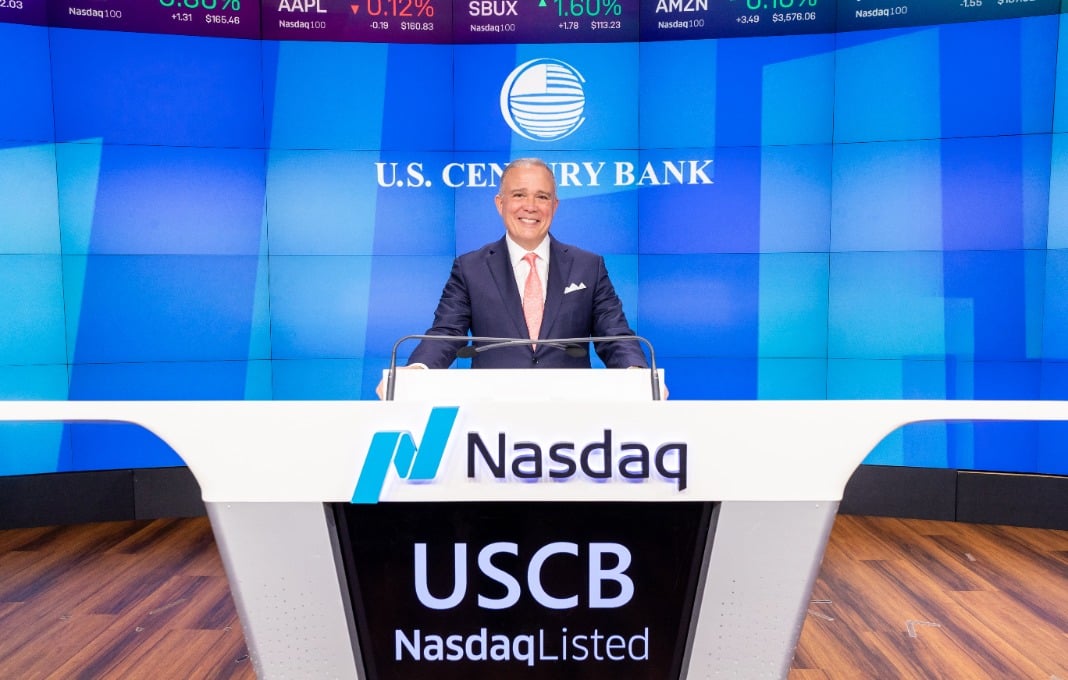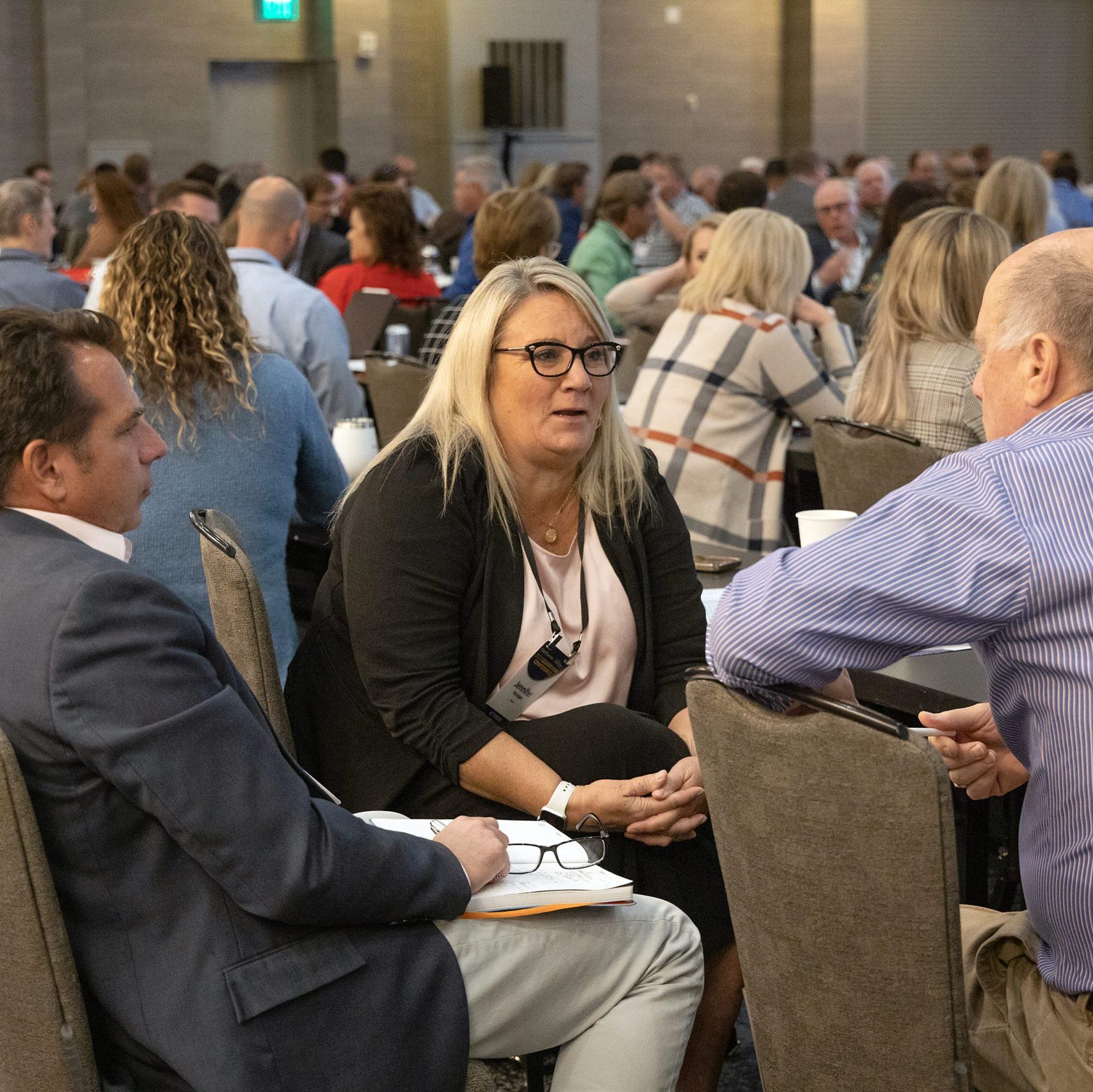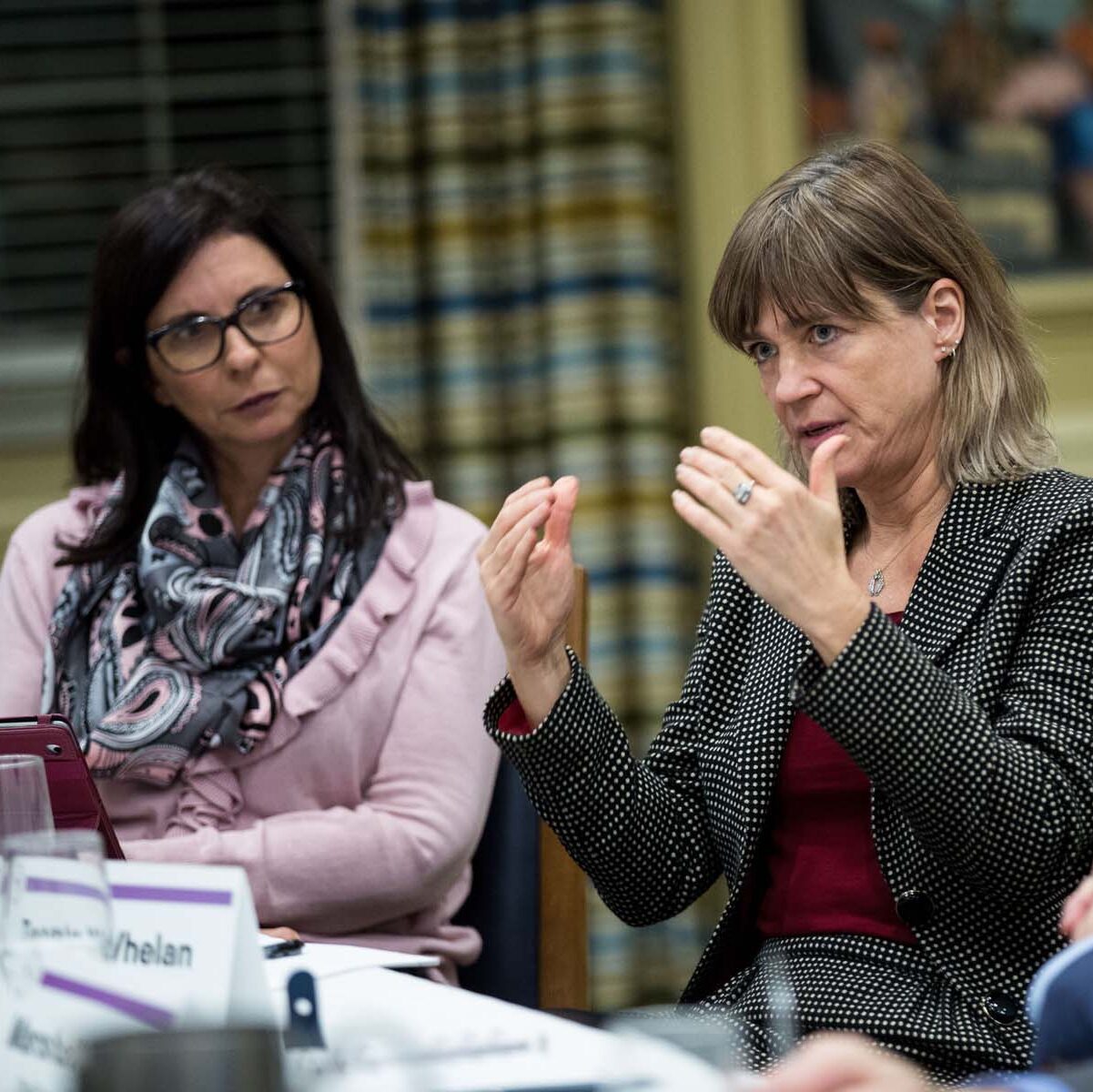
From Consent Order To Nasdaq: How We Turned Around A Failing Community Bank


When I walked into U.S. Century Bank in 2015, I knew what I was getting into—but the numbers still hit hard. Over $200 million in losses since 2009. Eight of our 18 branches were underperforming. A Consent Order from regulators. It’s the kind of situation where everyone’s watching to see if you’ll become another statistic in the long list of banks that didn’t make it past the financial crisis.
Ten years later, we’ve more than doubled our assets to $2.7 billion, gone public on Nasdaq and we now consistently perform in the top quartile of Florida banks. But this isn’t a victory lap—it’s a blueprint. Because if there’s one thing I’ve learned from 43 years in banking, it’s that turnarounds in highly regulated industries require a very specific playbook.
Let me share what actually worked.
Everyone talks about assessing the situation first, and I did that immediately and acted quickly.
Within 90 days, I hired thirty bankers, all people I’d worked with before, people I knew could execute under pressure. When you’re rebuilding trust with regulators, customers and a demoralized staff, you don’t have much time for a learning curve.
I also overhauled the executive and production teams, while working with the new board to source additional members—this was all done simultaneously. If that sounds aggressive, it was. But here’s the reality: the culture that created the problem won’t fix the problem. You need fresh perspectives and, frankly, people without the baggage of past mistakes weighing on every decision. US Century Bank’s turnaround gained traction when the board was broadened to include two private equity investors, a marketing expert, an attorney, a doctor, a CPA, an educator and a bank consultant. That professional diversity—combined with the board’s wide-ranging experience, guidance and consistent support of management—strengthened discipline, sharpened strategy, and translated into sustainable results.
The second priority was redefining our credit culture. We’d been hurt by commercial real estate concentration—the same story as hundreds of failed banks. Our new Credit Department led a comprehensive effort to identify every high-risk exposure and build new standards that would prevent us from repeating those mistakes. This wasn’t about being conservative for its own sake. It was about being smart.
Third, we cut our branch network from 18 to 10 while simultaneously upgrading our technology with a new core system, updated ATMs, and modern digital payment platforms. The conventional wisdom says you can’t cut costs and invest at the same time during a turnaround. That’s wrong. You must do both. The question simply becomes where to cut and where to invest.
Within six months of starting, I did something that might seem counterintuitive: I visited both the FDIC and Florida Office of Financial Regulation (OFR) to present our turnaround plan. That wasn’t required, but I’ve found that this proactive, transparent approach builds invaluable “regulatory capital” and strengthens the critical relationship between bankers and regulators. I laid out the challenges, the opportunities and the timeline. Then I kept going back with progress updates.
Over 16 years as president and CEO across two banks, I’ve learned that regulators aren’t the enemy. They’re partners with a different mandate. Building what I call “regulatory capital”—that professional, open relationship—is as important as financial capital. When they know you, trust your judgment, and see consistent execution against your commitments, you gain strategic flexibility that’s invaluable during growth phases.
I worked hard to establish honest and frequent communication with regulators, staff, investors and customers about the bank’s turnaround plans as well as updates on its financial health and overall progress. Our senior management worked with a sense of urgency in fostering a positive culture through clear leadership, sharp vision, and workforce engagement to motivate staff and improve service quality.
People always ask when we knew we’d turned the corner. Honestly, I never doubted this team could succeed. But two operational changes were pivotal in moving from survival mode to growth mode.
First, we consolidated branches strategically. We closed eight underperforming locations while doubling our assets and deposits. This streamlined our branch footprint, supported growth and cost efficiency, and maintained customer accessibility. Because it’s not really about brick-and-mortar anymore; it’s about being where your customers are, digitally and physically—finding the right balance of “bricks and clicks.”
Second, we developed six new business verticals beyond commercial real estate, including correspondent banking, yacht lending, association banking, and small business lending. We obtained SBA-designated lending authority for faster small-business loan approvals. Each vertical represented a deliberate diversification strategy to ensure we’d never again be overexposed to a single sector.
We targeted sectors with stable fundamentals: established small and medium-sized businesses, specific niches where we could offer genuine expertise, such as law firms, healthcare practices, homeowner and condominium associations. Our nonperforming loans are now at 0.06%, with a conservative 1.18% allowance for credit losses. That’s not luck—that’s disciplined portfolio management and active management of our loan-to-deposit ratio to ensure growth is supported by solid funding and capital buffers.
Florida is a real estate-denominated economy, and while we’ve diversified our portfolio regarding commercial real estate, we’ll always be an active player in that market. That’s why we established Florida Peninsula Title Company as a wholly-owned subsidiary.
Title work is part of every real estate transaction, so we decided to provide our clients with the opportunity to have their title work handled efficiently and competitively in-house. This is offered as a value-added service—there’s no obligation on the borrower’s part to use it. But it generates additional non-interest income while serving our clients better.
This decision illustrates how we evaluate new revenue streams: first, assess the benefit for our clients; second, evaluate the value as a revenue opportunity for the bank. It’s thoughtful innovation that complements rather than complicates our core business.
We went public in July 2021 with a $40 million offering. People ask, why then? Three reasons.
First, our financials were strong and our operating model was proven. You get one shot at an IPO. If you’re not ready, the market will tell you—painfully.
Second, post-pandemic, the market showed receptiveness to new offerings again. Timing matters.
Third—and this is crucial—we had simplified our capital structure. Before the IPO, U.S. Century Bank had a complicated capital stack, consisting of multiple classes of stock created during the 2015 recapitalization. To manage this complexity, the bank used the IPO as a tool to simplify and streamline its capital base, making our capital structure more transparent and attractive to public investors while providing the bank with fresh funds to support our continued growth plans. Performance and transparency really does attract capital.
Being public has sharpened every aspect of our operation. The accountability to shareholders, the quarterly earnings calls, the heightened regulatory scrutiny—it all demands a level of discipline that makes you better.
Of course, being the CEO of a public company means enhancing one’s skillset to effectively manage investor relations, lead quarterly earnings calls and enhance regulatory relationships. In my current role, I’ve had to hone my ability to clearly articulate the bank’s financial performance, growth strategy, and risk management approach to a broad base of shareholders and analysts. This includes drafting transparent, confident messaging to build and maintain investor trust and support. Also, it is critical to be able to manage market expectations around quarterly results while keeping the focus on sustainable, strategic growth, which is critical for community banks transitioning to public status.
Here’s the tension every community bank faces: How do you compete with megabanks and fintechs without losing what makes you valuable?
Our answer: We don’t try to be something we’re not. We emphasize personalized, relationship-driven banking with local decision-making authority. We know our markets deeply. Our clients aren’t account numbers—they’re businesses we understand.
But we also invest readily in technology. Modern digital banking platforms, mobile banking, digital account opening, and Zelle for both person-to-person and business-to-business transactions. We’ve partnered selectively with fintech firms for innovative products and operational efficiencies, including compliance functions. Community banks will never out-develop tech companies. But we can leverage their innovations while maintaining control over customer relationships and data.
It’s high-touch service supported by automation. Our association banking clients benefit from API integration, automated lockbox payments, and ACH processing—reducing manual work while we still provide the personalized guidance they value. And we actively support community causes, reinforcing our role as a committed, local financial partner, which strengthens customer loyalty in ways that purely digital competitors can’t replicate.
If you’re facing a turnaround situation, here’s my short list of advice:
• Build your team immediately. Don’t wait to “assess” for too many months. Get the right people in place fast to focus on financial discipline and stabilize the balance sheet by addressing asset quality issues, controlling costs, and rebuilding capital. A strong financial foundation enables strategic flexibility.
• Lead with clarity and accountability. We held weekly executive committee meetings, loan committee meetings, sales meetings. Discipline and accountability start at the top and must be visible throughout the organization.
• Communicate relentlessly. That means with regulators, staff, investors, customers—because transparency builds trust, while silence creates anxiety and speculation.
• Innovate thoughtfully. Yes, modernize operations and technology. But don’t abandon your core strengths or ignore risk controls. Balance is everything.
• Think long-term while executing short-term. The market wants quarterly results. You need sustainable strategic growth. Manage expectations around both.
In July 2021—five years, seven months, and two days after I joined the bank—I stood at Nasdaq ringing the closing bell, surrounded by our board and management team, livestreaming to our staff back in Miami.
That moment represented something bigger than going public. It was proof that with the right people, clear vision, disciplined execution, and unwavering commitment to doing things right, you can take an institution from regulatory sanctions to top-quartile performance, with assets growing beyond $2.7 billion—all of it evidence of what can be accomplished when you have a phenomenal team working well together.
We’re not done. We’ll keep growing thoughtfully, maintaining our community identity while leveraging technology, deepening client relationships while expanding our capabilities. Because turnarounds aren’t about survival—they’re about building something sustainable.
And that work never really ends.
0

1:00 - 5:00 pm
Over 70% of Executives Surveyed Agree: Many Strategic Planning Efforts Lack Systematic Approach Tips for Enhancing Your Strategic Planning Process
Executives expressed frustration with their current strategic planning process. Issues include:
Steve Rutan and Denise Harrison have put together an afternoon workshop that will provide the tools you need to address these concerns. They have worked with hundreds of executives to develop a systematic approach that will enable your team to make better decisions during strategic planning. Steve and Denise will walk you through exercises for prioritizing your lists and steps that will reset and reinvigorate your process. This will be a hands-on workshop that will enable you to think about your business as you use the tools that are being presented. If you are ready for a Strategic Planning tune-up, select this workshop in your registration form. The additional fee of $695 will be added to your total.

2:00 - 5:00 pm
Female leaders face the same issues all leaders do, but they often face additional challenges too. In this peer session, we will facilitate a discussion of best practices and how to overcome common barriers to help women leaders be more effective within and outside their organizations.
Limited space available.

10:30 - 5:00 pm
General’s Retreat at Hermitage Golf Course
Sponsored by UBS
General’s Retreat, built in 1986 with architect Gary Roger Baird, has been voted the “Best Golf Course in Nashville” and is a “must play” when visiting the Nashville, Tennessee area. With the beautiful setting along the Cumberland River, golfers of all capabilities will thoroughly enjoy the golf, scenery and hospitality.
The golf outing fee includes transportation to and from the hotel, greens/cart fees, use of practice facilities, and boxed lunch. The bus will leave the hotel at 10:30 am for a noon shotgun start and return to the hotel after the cocktail reception following the completion of the round.